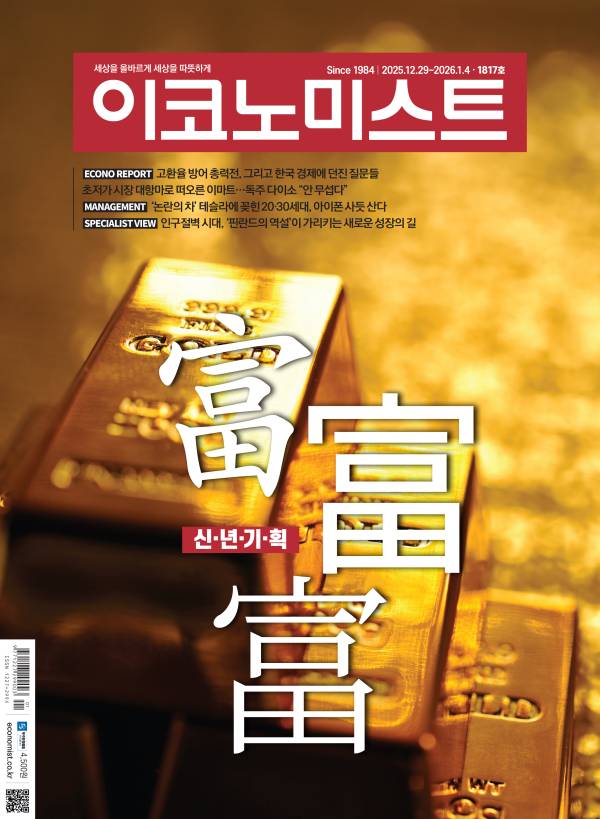산업 일반
[영문과 함께 읽는 HOT ISSUE] ‘불황’ 남용은 공포심만 조장
- [영문과 함께 읽는 HOT ISSUE] ‘불황’ 남용은 공포심만 조장
|
Hold the Hysteria (for Now) Regarding the economy, it's hard not to notice this stark contrast: the "real economy" of spending, production and jobs - though weakening - is hardly in a state of collapse; but much of today's semi-hysterical commentary suggests that it is. Financial markets for stocks and bonds are regularly described as being "in turmoil." People talk about a recession as if it were the second coming of Genghis Khan. Some whisper the dreaded word "depression." Meanwhile, Americans are expected to buy about 15 million cars, SUVs and light trucks in 2008; though down from 16.5 million in 2006, that's still a lot. There's a disconnect between what people see around them and what they're told, often by highly respectable authorities, about what’s happening. The first is upsetting (rising gas prices, falling home prices, fewer jobs) but reflects the normal reverses of a $14 trillion economy. The second ("panic," "financial meltdown") suggests the onset of something catastrophic and totally outside the experience of ordinary people. The economy, said The New York Times in a page-one piece last week, may be on "the brink of the worst recession in a generation" - an ominous, if imprecise, warning. It may be, but as yet, the evidence is scant from either conventional economic statistics or mainstream forecasts. A recession is a noticeable period of declining output. A group of academic economists set the exact dates of a recession in hindsight, and since World War II, they're declared 10 of them. On average, these have lasted 10 months, involved a peak monthly unemployment rate of 7.6 percent and resulted in a decline of economic output (gross domestic product) of 1.8 percent, reports Mark Zandi of Moody's Economy.com. If the two worst recessions (those of 1981-82 and 1973-75, with peak unemployment of 10.8 percent and 9 percent, respectively) are excluded, the average peak jobless rate is close to 7 percent. No one doubts that the economy has slowed. Many economists think a recession has already started. Zandi is one. He forecasts peak unemployment of 6.1 percent (present unemployment: 4.8 percent) and a GDP drop of 0.4 percent. If that comes true, the recession of 2008 wouldn't be one of the worst since World War II; it would actually be milder than the average postwar recession and milder than the last two, those of 1990-91 and 2001. Broadly speaking, the story is similar for stocks. So far, their weakness is unexceptional. A standard definition of a "bear market" is a drop of 20 percent or more. Last week, the market was at times close to that. Declines would have to get much worse to qualify as momentous. Since 1936, there have been 11 bear markets as measured by the Standard & Poor's index of 500 stocks, says Howard Silverblatt of S&P. On average, they're lasted 20 months and involved a decline of 34 percent. One was 60 percent (1937-42) and two were nearly 50 percent (1973-74 and 2000-02, the last being the "tech bubble"). Some causes of the present hysteria are familiar: media hype, political finger-pointing and whining from Wall Street types. But there's another large, invisible cause. It's an idea: disagreement over whether the economy is highly unstable or whether business cycles are mostly self-correcting. Those who think the economy is highly unstable talk now of an alarming "negative feedback loop" - a "vicious circle" to most people. Housing prices fall, creating more defaults and foreclosures; losses on mortgages increase, eroding the capital of banks and investment banks and causing them to curtail lending - which weakens the economy, depresses housing prices and causes more foreclosures and losses. Just as in the Depression, a crippled financial system spreads the slump. Only forceful government intervention can break the downward spiral. Not necessarily, if most markets self-correct. As housing prices fall, more buyers come into the market; sales and construction revive. Most postwar recessions have been brief and mild, arguably because these mechanisms are pervasive. If inventories get too high, production slows and surpluses are sold; then production accelerates. If consumers or businesses are over-indebted, they reduce spending to repay loans; spending speeds up when debt burdens drop. Possible in theory, vicious circles are rare in practice. Government can help smooth business cycles. But if government is too aggressive, it may make matters worse. That occurred in the 1970s when easy credit created double-digit inflation - and then required harsh recessions to suppress it. Hardly anyone adheres rigidly to either view but, consciously or not, many favor one or the other. That explains why the subprime losses seem so threatening to some - the start of a chain reaction - and less so to others. The Great Depression doesn't settle the issue. It's true that massive bank failures helped convert an ordinary recession into an economic calamity; but it’s also true that government policy - excessive rigidity by the Federal Reserve - actually aggravated the banking collapse. Still, the economic conditions of the 1930s (average unemployment: 18 percent) are so different from today's that casual use of the term "depression" amounts to fearmongering. If the calamities implied by today's hysteria occur, they will probably result from something we don't now know or haven't yet imagined.
ⓒ이코노미스트(https://economist.co.kr) '내일을 위한 경제뉴스 이코노미스트' 무단 전재 및 재배포 금지











![면봉 개수 → 오겜2 참가자 세기.. 최도전, 정직해서 재밌다 [김지혜의 ★튜브]](https://image.isplus.com/data/isp/image/2025/12/21/isp20251221000019.400.0.jpg)
![갓 잡은 갈치를 입속에... 현대판 ‘나는 자연인이다’ 준아 [김지혜의 ★튜브]](https://image.isplus.com/data/isp/image/2025/11/21/isp20251121000010.400.0.jpg)



당신이 좋아할 만한 기사
브랜드 미디어
브랜드 미디어
[속보]코스피, 또 사상 최고치…1.77% 오른 4385.92 출발
세상을 올바르게,세상을 따뜻하게팜이데일리
팜이데일리
팜이데일리
유재석 합류 넷플, 박나래 품을까 디플…새해 기대작은 [2026 OTT 라인업]
대한민국 스포츠·연예의 살아있는 역사 일간스포츠일간스포츠
일간스포츠
일간스포츠
하루 10시간 1200상자 척척…새해 물류판 뒤흔든 '알바' 정체[르포]
세상을 올바르게,세상을 따뜻하게이데일리
이데일리
이데일리
결과 뻔한데도…MBK가 고려아연 이사회 ‘재결의’ 노리는 이유
성공 투자의 동반자마켓인
마켓인
마켓인
클래시스 볼뉴머, "효능 높이고 통증 줄였다"…써마지 넘어 中1.4조 시장 재편 신호탄
바이오 성공 투자, 1%를 위한 길라잡이팜이데일리
팜이데일리
팜이데일리